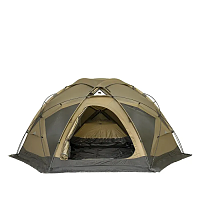Cart
Loadding...
How to Find the Perfect Dispersed Camping Spot: Tips and Tricks
Jan 15, 2024
Introduction:
Dispersed camping, also known as boondocking or primitive camping, offers outdoor enthusiasts the opportunity to experience nature in its purest form. Unlike traditional campgrounds, dispersed camping allows you to set up camp in undeveloped areas, providing a sense of solitude and a deeper connection to the wilderness. Finding the perfect dispersed camping spot requires careful planning and research. In this detailed guide, we will share valuable tips and tricks to help you find the ideal spot for your next outdoor adventure.
I. Research and Planning:
Before embarking on your dispersed camping trip, thorough research and planning are essential. Consider the following steps:
1. Identify Suitable Public Lands:
Research public lands in your desired area that permit dispersed camping. National forests, Bureau of Land Management (BLM) areas, and some state parks often allow dispersed camping. Check their websites or contact the respective agencies for specific rules and regulations.
2. Understand Regulations and Restrictions:
Each public land has its own set of rules and restrictions for dispersed camping. Familiarize yourself with these regulations, including camping duration limits, campfire restrictions, waste disposal guidelines, and any permits required.
II. Use Online Resources:
The internet is a valuable tool for finding dispersed camping spots. Explore the following online resources:
1. Public Land Websites:
Visit the websites of the public lands you identified earlier. Many public land websites provide information on dispersed camping areas, camping guidelines, and maps.
2. Interactive Maps:
Use interactive maps like Google Maps, Gaia GPS, or the USGS National Map to identify potential dispersed camping areas. Look for areas with nearby forest roads or trails that indicate access to undeveloped camping sites.
III. Seek Local Knowledge:
Local knowledge can be invaluable in finding the perfect dispersed camping spot. Consider the following sources:
1. Visitor Centers and Ranger Stations:
Contact local visitor centers and ranger stations near your chosen camping area. They often have up-to-date information on dispersed camping locations, road conditions, and any closures or restrictions.
2. Outdoor Enthusiast Communities:
Engage with online forums, social media groups, and outdoor enthusiast communities to connect with experienced campers in your desired area. Seek advice, ask for recommendations, and learn from their firsthand experiences.
At POMOLY Find the Best Camping Gear for You
IV. Scouting and Exploring:
Once you have narrowed down potential dispersed camping areas, it's time to scout and explore. Follow these steps:
1. On-Site Evaluation:
Visit your chosen areas before your camping trip, if possible. Explore the surroundings, assess the terrain, and look for suitable campsites that meet your preferences, such as proximity to water sources or scenic views.
2. Consider Accessibility:
Evaluate the accessibility of the camping area. Ensure your vehicle or hiking equipment can handle the roads or trails leading to the site. Be mindful of any weather-related challenges, such as snow or mud.
V. Prioritize Safety and Leave No Trace Principles:
When selecting a dispersed camping spot, safety and environmental considerations are paramount. Keep the following in mind:
1. Safety Precautions:
Choose a camping spot that is away from potential hazards like dead trees, unstable slopes, or flood-prone areas. Be aware of any wildlife activity in the area and take appropriate precautions.
2. Leave No Trace Principles:
Adhere to the Leave No Trace principles to minimize your impact on the environment. Respect nature by properly disposing of waste, minimizing campfire impacts, and leaving the campsite as you found it.
VI. Be Flexible and Have Backup Plans:
While thorough planning is essential, it's crucial to remain flexible and have backup plans. Factors like weather conditions, road closures, or unforeseen circumstances may require you to adjust your camping location. Always have alternative options in mind to ensure a successful camping trip.
Conclusion:
Finding the perfect dispersed camping spot requires research, planning, and a sense of adventure. By conducting thorough research, utilizing online resources, seeking local knowledge, scouting potential areas, prioritizing safety, and respecting the environment, you can discover idyllic spots that offer unforgettable wilderness experiences. Remember to always follow the rules and regulations of the public lands you visit and leave no trace behind. Embrace the freedom and serenity of dispersed camping as you embark on your outdoor adventures. Happy camping!
- Contact Us
-

About Pomoly
Pomoly is a leading camping brand specializing in hot tents and tent stoves. We are camping life explorer, Follow Page / Join Group, let's make camping enjoyful together!
Working Hours
Mon-Fri, 09:00 - 17:00

- Company Info
- NEWS
- About us
- Pomoly Name
- Leave-No-Trace
- Contact Now
- Facebook Group
- YouTube Learning
- Contact Us
- Topic Collections
- Policies & Terms
- Payment Policy
- Shipping Policy
- Return & Refund
- Privacy Policy
- Terms of Use
- Tax Policy
- Website Disclaimer
- Safety Disclaimer
- Warranty Policy
- Promotion Policy
- Pre-order Policy
- INTELLECTUAL PROPERTY RIGHTS
- Dealers Agreement And Terms
- Become Affiliate
- User Center
- Forget Password
- My Orders
- Tracking Order
- My Account
- Register
- Popular Searches
-
Tipi Tents Dome Tents Camping Tent Hammock Stove Camping Camping Pellet Stove Circle 6 Titanium Water TankDome X Locomotive 20 LEO 2 camping tent T-Brick 2.0 T1 2.0 tent stove Dweller wood stove Oroqen 2.0 Chimney Water Tank Lumberjack STOVEHUT Bromance 70 Tipi Pomoly Coupon Baker Oven Stove Titanium elbow Fire Pits Tent Stove titanium Stove Outdoor Pellet Stove
keebon pellet stove






